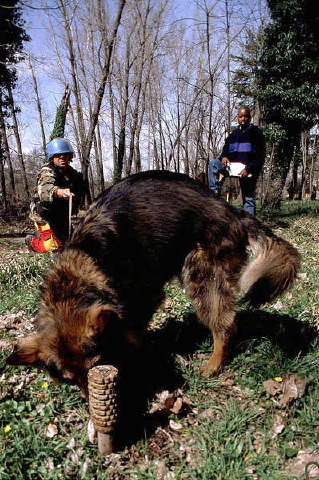 |
  
bb-mine-034b.jpg
"Dogs have 80-percent reliability," says Jozo Primorac, a Croat who was hired by the American commercial company Ronco to work with dogs in Buna, the pre-war tourist resort near Mostar. "That's why every inch of the minefield should be sniffed up by two dogs." But comparing to not more than 30 square metres of the ground that can be checked in one working day by a human being, the dogs who can sniff out 500 to 1,000 square meters are far more efficient. "All the orders for dogs are in Dutch, because the world's best dog schools for explosive searching are in Holland," adds Clarke Young, an American dog-training expert, whose demining job led him from Pakistan, Mozambique, Rwanda and brought him to Bosnia in 1997. He speaks well of dog trainers who are, as all the other deminers, recruited from among the locals, noting that the most difficult task was to adapt eleven shepherds of various pedigrees, who were in the meantime yelping out of cramped-up kennels, to local conditions and to local mines. For a dog, mine searching is a kind of a game where for every mine or an explosive body it finds - and brings it to trainer's attention by calmly sitting next to it and waiving its tail - it is awarded a rubber ball, which during the exhausting training became something similar as heroin is for the drug addict. However, a dog only finds the mine, while it is a human being who has to dig it out and destroy it. Or as the British officer Powell put it: "A dog is good for detecting mines, but it won't dig it and eat it." |